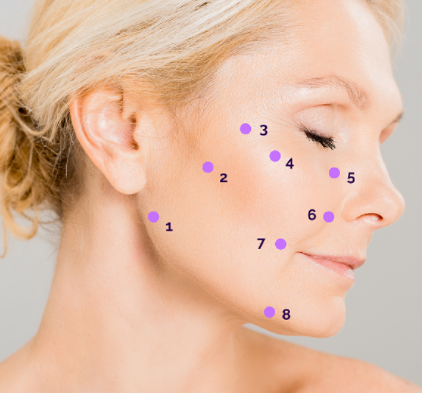Facial assessment before filler and Botox treatment
- sally006
- Aug 19
- 2 min read
A comprehensive facial assessment is the cornerstone of achieving safe, natural, and aesthetically pleasing outcomes with dermal filler injections. The purpose of this evaluation is to analyse facial proportions, symmetry, volume distribution, and skin quality to determine areas where fillers can enhance overall beauty and restore harmony.
Patient’s Goals and Expectations
The initial step is to understand the patient’s aesthetic concerns and desired improvements. Some patients seek rejuvenation, focusing on reversing age-related volume loss, while others aim for beautification, enhancing features such as lips, cheeks, or jawline. Clarifying whether the goal is subtle enhancement, facial balancing, or a more transformative change ensures treatment is aligned with realistic expectations.
Facial Proportions and Symmetry
Facial beauty is closely linked to proportion and balance. Assessment begins by observing the face in thirds (upper, middle, and lower) and fifths (vertical divisions). Ideally, each third of the face should be of equal length, and symmetry between the right and left sides should be harmonious. Any noticeable imbalance, such as midface flattening, asymmetrical lips, or disproportion in the chin and jawline, guides the areas for correction.
Volume Loss and Age-Related Changes
Aging leads to gradual loss of subcutaneous fat, bone resorption, and skin laxity, contributing to a tired or sagging appearance. Commonly affected regions include the temples, cheeks, tear troughs, nasolabial folds, and marionette lines. A careful palpation and visual inspection help determine where fillers can restore volume, lift tissues, and soften deep folds. For younger patients, assessment focuses more on structural enhancement and contouring rather than anti-aging correction.
Skin Quality and Texture
Skin condition significantly impacts filler outcomes. Thin, delicate skin in areas such as under the eyes may require softer, lighter fillers, while thicker skin over the cheeks or jawline can accommodate more robust products. The presence of fine lines, acne scarring, or uneven texture may influence the type of filler and technique used.
Feature-Specific Evaluation
Cheeks: Assess projection and contour, as well as their role in midface support. Enhancing the cheeks can restore youthfulness and improve the overall facial shape.
Lips: Evaluate lip volume, shape, and proportion relative to the rest of the face. Filler can define borders, correct asymmetry, or subtly increase volume for a natural appearance.
Tear Troughs: Examine under-eye hollows, which can contribute to a tired look. Appropriate filler placement can refresh the eyes and brighten the face.
Jawline and Chin: Assess for definition and proportion. Enhancing these areas can improve facial balance, particularly in patients with retrusion or soft jawline contours.
Nasolabial Folds and Marionette Lines: Consider the depth and contribution to facial aging. Treatment here should be balanced with midface volume restoration for natural results.
Safety Considerations
A thorough assessment also involves identifying high-risk zones for vascular complications, previous filler treatments, and medical history. Proper injection planning minimizes risks while optimizing.
Facial assessment for filler injections is not solely about addressing isolated concerns but about viewing the face holistically. By analysing proportions, symmetry, volume loss, and skin quality, an individualized treatment plan can be designed. The ultimate goal is to enhance natural beauty, restore youthful harmony, and achieve subtle yet impactful improvements that align with the patient’s desires.







Comments